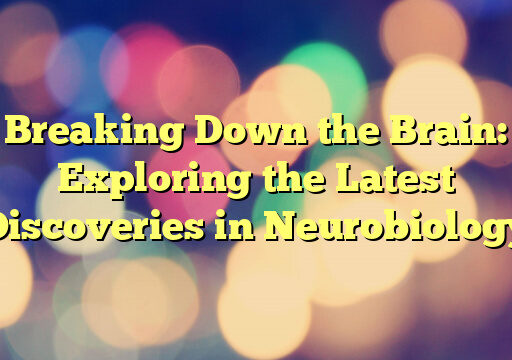The human brain is one of the most complex and intriguing organs in the human body. From controlling basic bodily functions to processing thoughts and emotions, the brain plays a crucial role in our daily lives. Neurobiology is the study of the structure and function of the brain and nervous system, and it offers insights into how our brains work and the mysteries that still surround them.
The Structure of the Brain
The human brain is composed of billions of neurons, which are specialized cells that transmit information through electrical and chemical signals. These neurons are organized into different regions of the brain, each responsible for specific functions such as movement, memory, and language.
The Cerebrum
The cerebrum is the largest part of the brain and is divided into two hemispheres, each with four lobes: the frontal lobe, parietal lobe, temporal lobe, and occipital lobe. The cerebrum controls higher cognitive functions such as reasoning, planning, and language.
The Cerebellum
The cerebellum is located below the cerebrum and is responsible for coordinating movement and balance. It plays a crucial role in motor control and muscle coordination.
The Brainstem
The brainstem is located at the base of the brain and connects the brain to the spinal cord. It controls basic bodily functions such as breathing, heart rate, and sleep.
How the Brain Works
The brain works by sending electrical signals between neurons through synapses, which are tiny gaps between neurons where neurotransmitters are released. These neurotransmitters carry information from one neuron to another, allowing for communication within the brain.
Neurotransmitters play a key role in regulating mood, sleep, and cognition. Imbalances in neurotransmitter levels can lead to mental health disorders such as depression, anxiety, and schizophrenia.
Plasticity
The brain has the ability to change and adapt in response to experiences, a phenomenon known as neuroplasticity. This ability allows the brain to reorganize itself in response to learning, injury, or disease.
For example, learning a new skill can lead to the formation of new neural connections in the brain, while damage to a specific region of the brain can result in other regions taking over its functions.
Conclusion
Exploring the mysterious workings of the brain through the field of neurobiology offers insights into the intricate networks and processes that govern our thoughts, emotions, and behaviors. By understanding how the brain functions, we can develop treatments for neurological and mental health disorders and unlock the secrets of human cognition and consciousness.
FAQs
What is neurobiology?
Neurobiology is the study of the structure and function of the brain and nervous system. It seeks to understand how the brain works and how it influences behavior and cognition.
What are neurotransmitters?
Neurotransmitters are chemicals that transmit signals between neurons in the brain. They play a crucial role in regulating mood, sleep, and cognition.
What is neuroplasticity?
Neuroplasticity is the brain's ability to change and adapt in response to experiences. It allows the brain to reorganize itself in response to learning, injury, or disease.
Unlock Your Mental Potential




